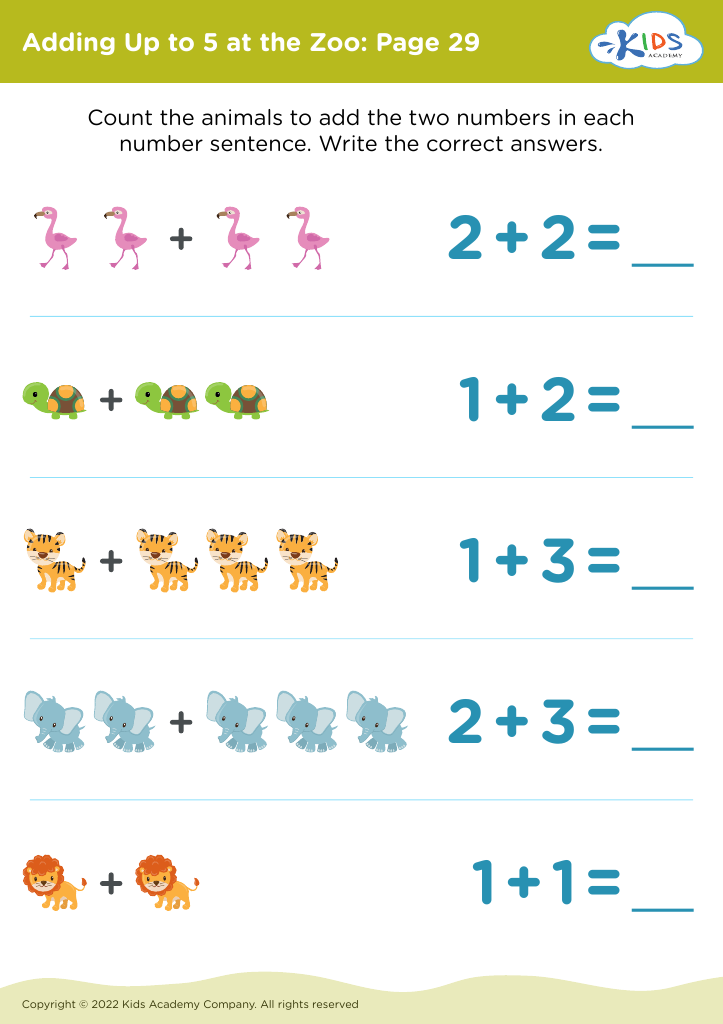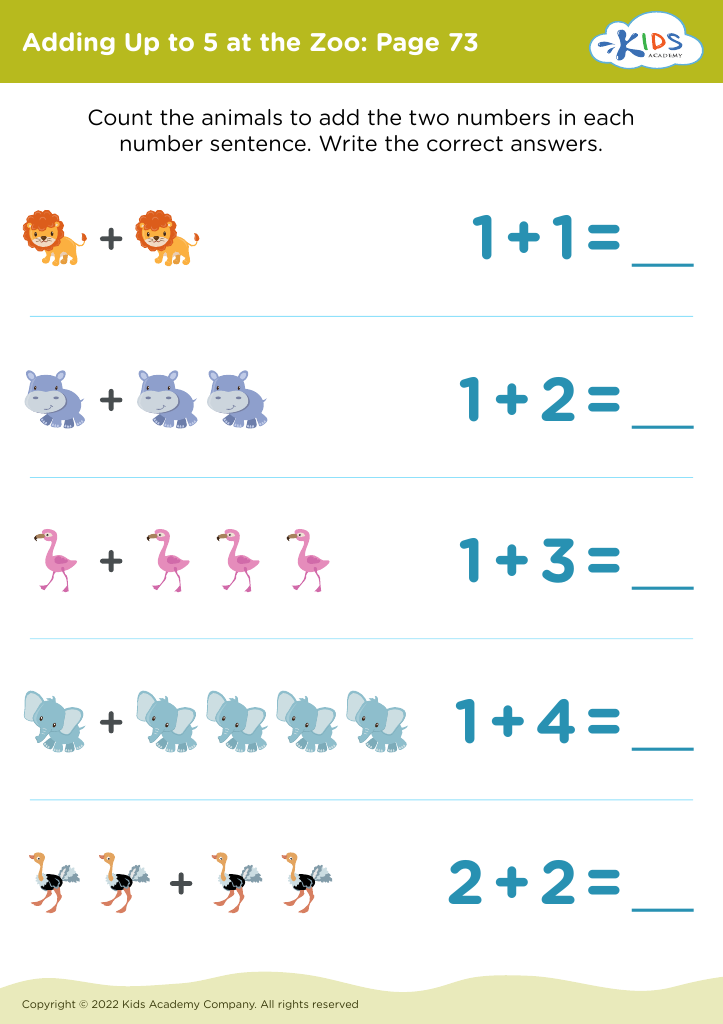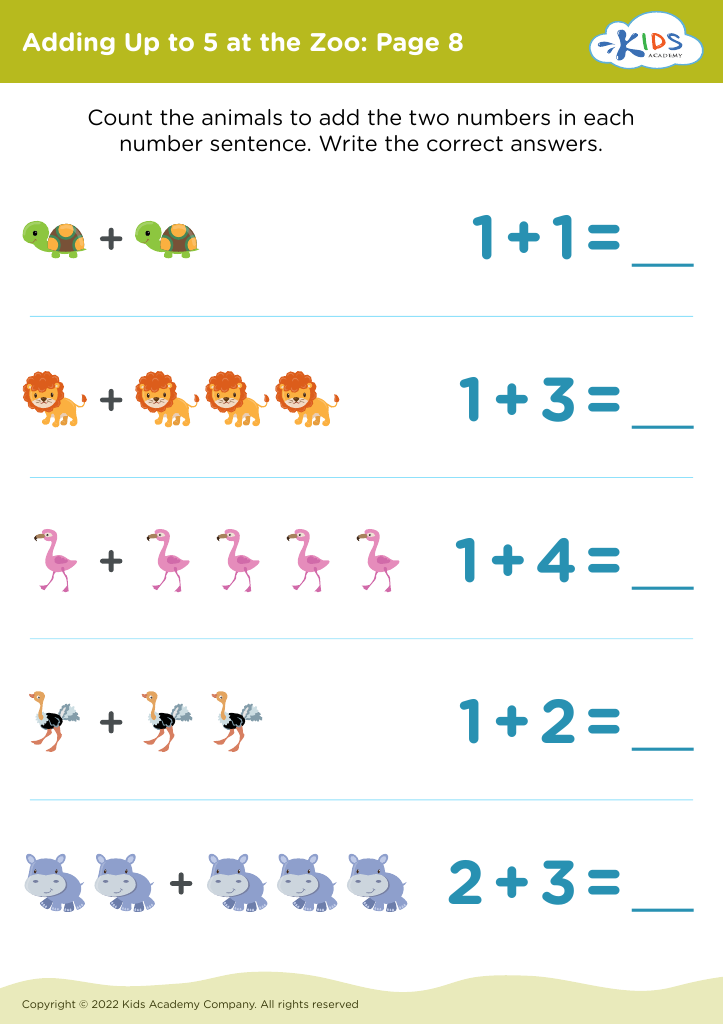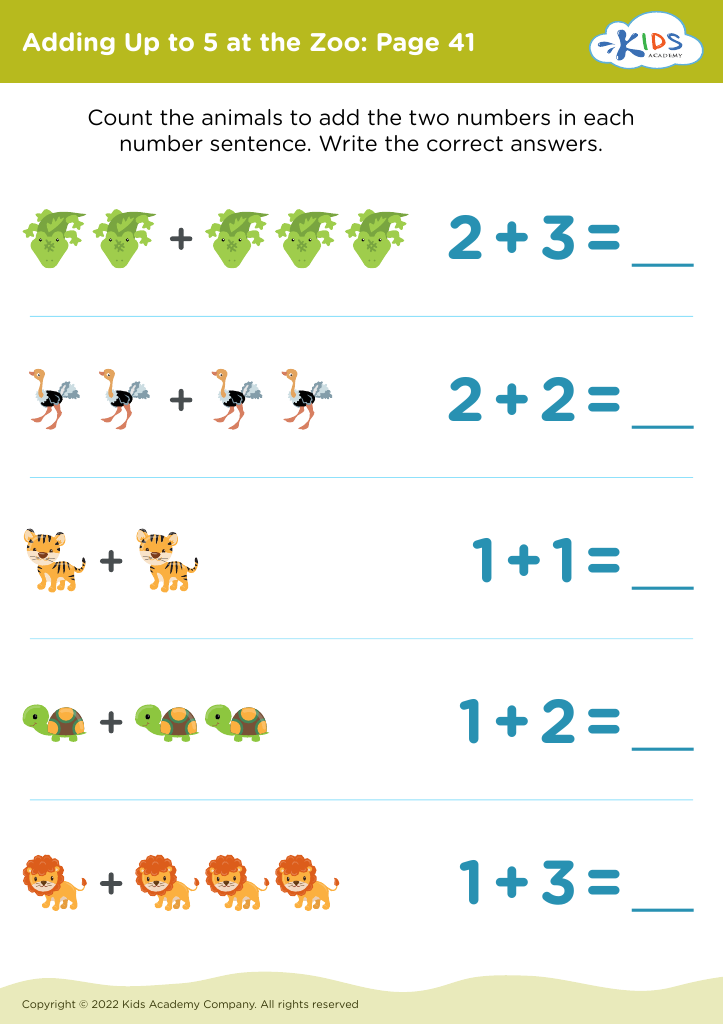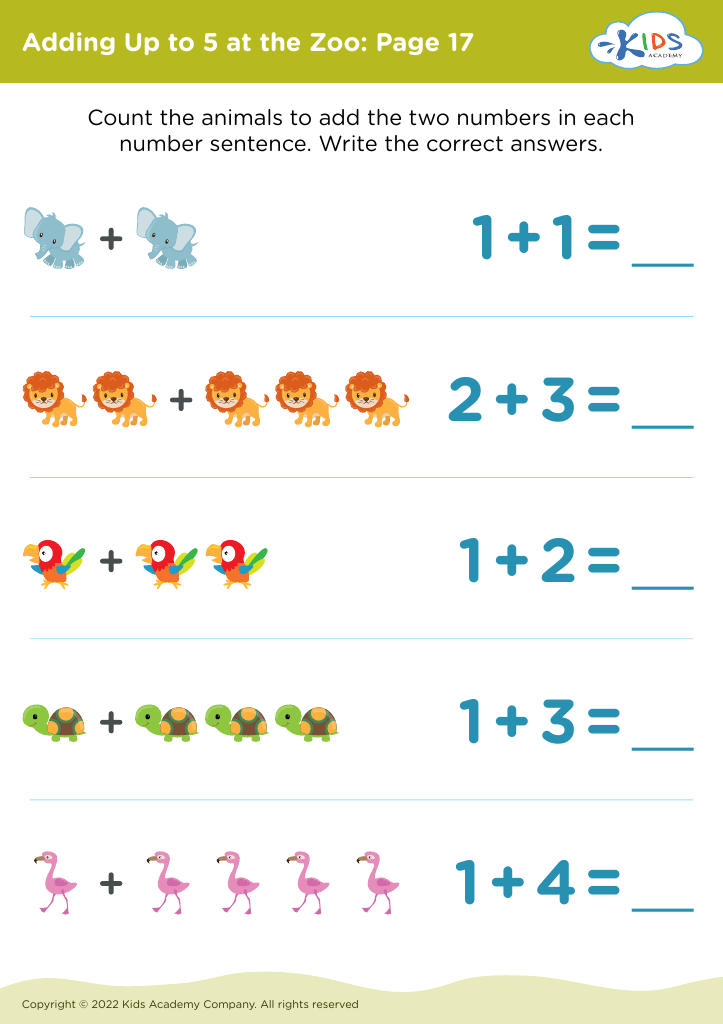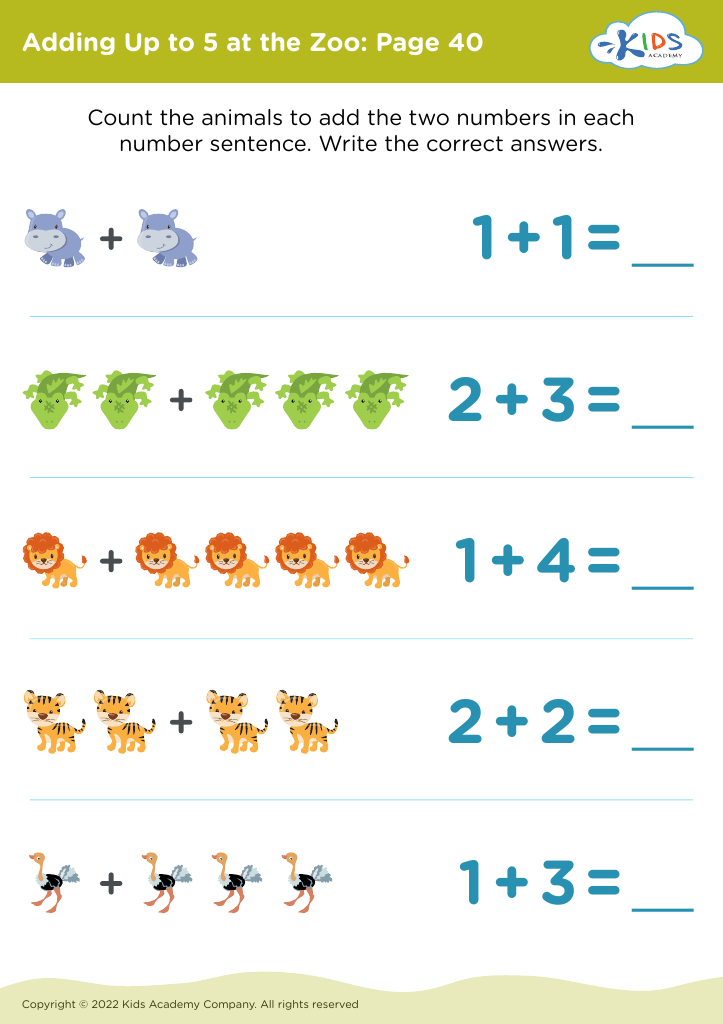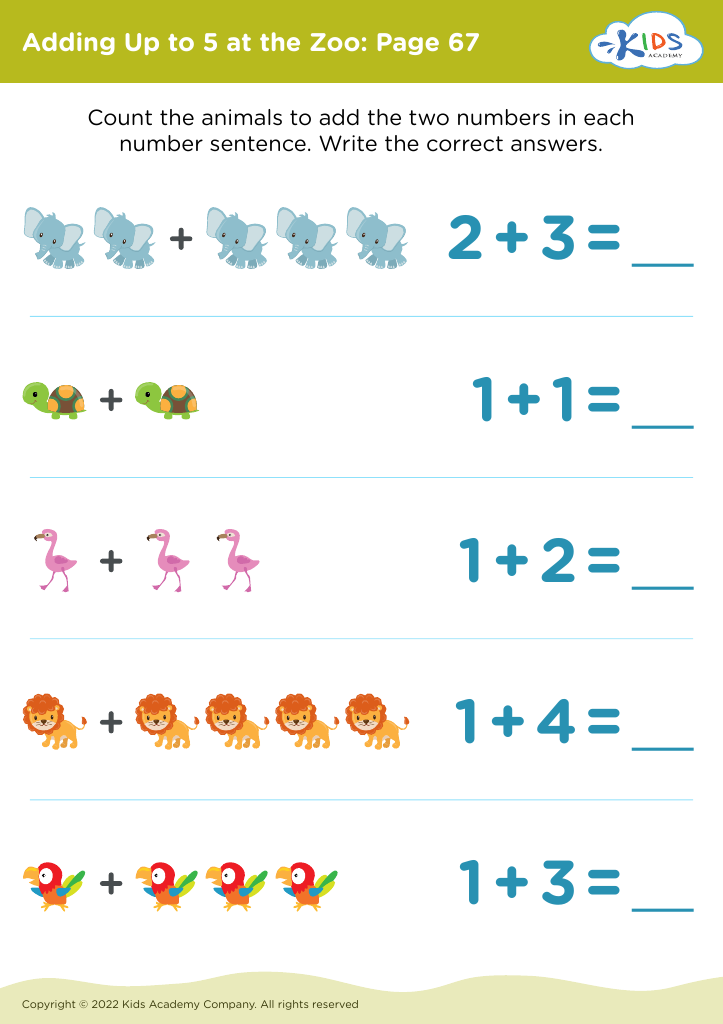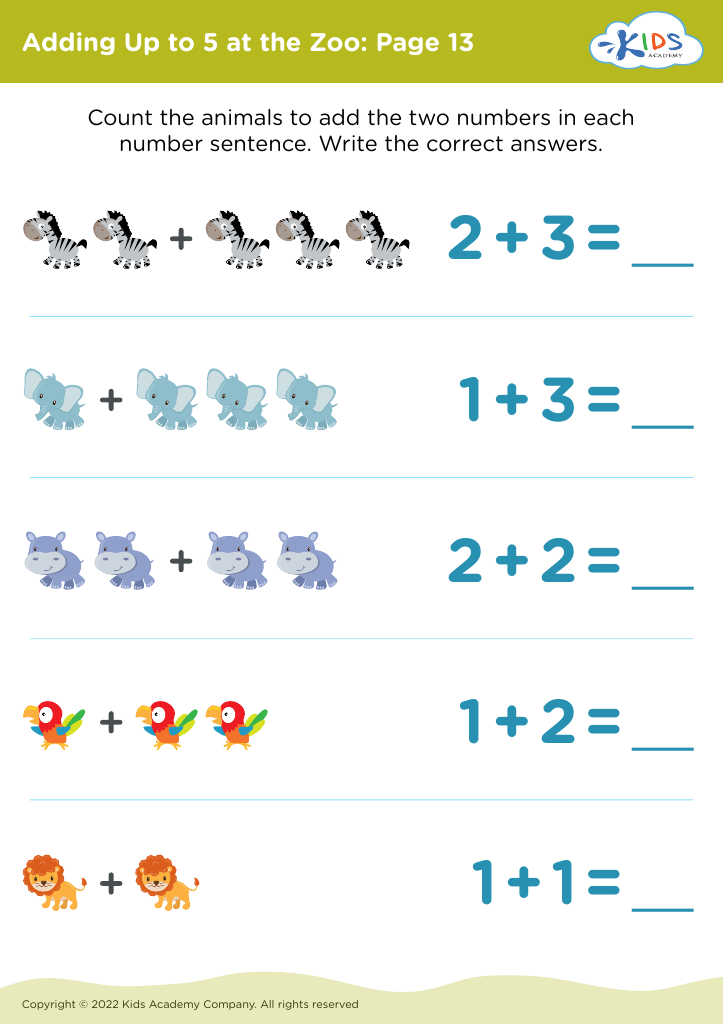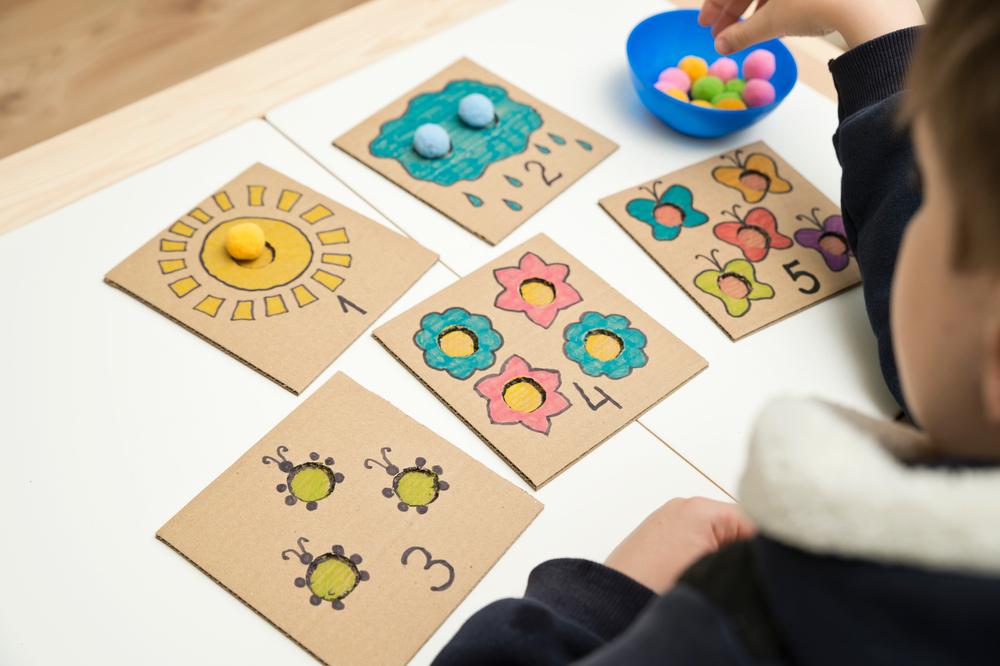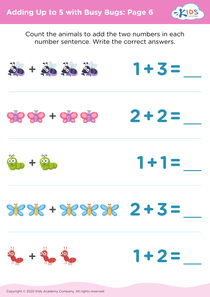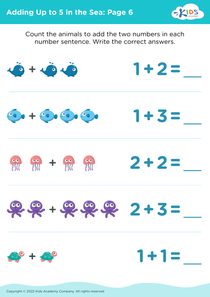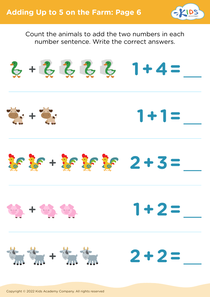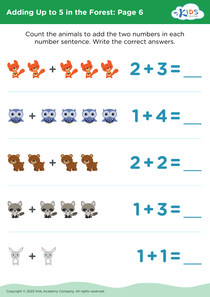Animal identification Adding at the Zoo Worksheets for Ages 4-6
8 filtered results
-
From - To
Discover the fun of learning with our "Animal Identification Adding at the Zoo Worksheets" designed for ages 4-6! These engaging worksheets provide young learners with a playful way to practice addition while exploring fascinating animals. Children will enhance their math skills by identifying different zoo animals and solving addition problems based on them. Our colorful illustrations and interactive exercises stimulate curiosity and promote a love for learning. Perfect for home or classroom use, these worksheets encourage teamwork, critical thinking, and creativity. Let your child embark on an exciting educational adventure with our animal-themed addition activities today!
Animal identification at the zoo is vital for both parents and teachers, especially for children ages 4-6. Firstly, it enhances learning experiences. When young kids can identify animals, it sparks their curiosity and interest in nature, encouraging them to ask questions and learn more about wildlife. This fundamental knowledge roots an early appreciation for animals and their habitats.
Secondly, understanding animal identification promotes safety and respect. By recognizing different species, children learn how to observe animals from a distance and understand their behaviors. This fosters a sense of responsibility for the environment and teaches kids how to coexist with nature responsibly.
Moreover, zoo visits serve as excellent opportunities for social learning. Engaging in activities like animal identification encourages children to work together, share knowledge, and bond over shared discoveries. It fosters teamwork and communication skills that are essential at this age.
Lastly, it strengthens family and community connections. Parents and teachers can create memorable experiences by participating in zoo activities, building their child’s confidence and circle of affection. This shared learning experience can deepen relationships, making the trip to the zoo not just fun but also an impactful educational journey. By emphasizing animal identification, we nurture a generation of informed and caring individuals.
